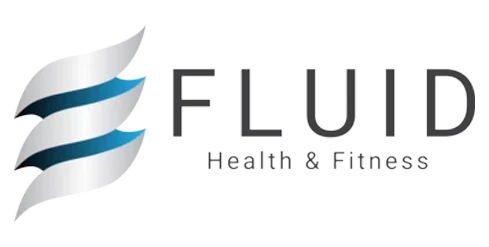
Our Philosophy: Why Cardiorespiratory Matters
In real athletic development — not gimmicks or weekend warrior trends — metabolic conditioning must be built on a structurally sound chassis.
At Fluid Health and Fitness, we operate by one clear law:
Fix the structure. Then condition it.
Skipping this step isn’t hardcore. It’s reckless.
The Foundations
The Fluid Movement Model
Before conditioning:
-
Assess biomechanics.
-
Correct joint loading patterns.
-
Stabilize respiratory mechanics.
-
Control posture under stress.
Only when the body moves efficiently do we layer in metabolic conditioning. Anything else is simply accelerating dysfunction.
Cardiorespiratory Training:
Built for Real Athletes
Five Phases of Cardio Training
| Phase | Focus | Fluid Interpretation |
|---|---|---|
| Phase 1: Base | Aerobic endurance at low intensity | Reestablish diaphragmatic breathing. Stabilize canister (core control) while introducing sustained load. |
| Phase 2: Interval | Moderate-high efforts with controlled recovery | Develop adaptability without sacrificing postural or respiratory integrity. |
| Phase 3: Linear | Anaerobic threshold endurance | High-effort tolerance built on structural alignment. |
| Phase 4: Multidirectional | Movement resilience across planes | Build durability beyond linear movement patterns. |
| Phase 5: Sport-Specific | Reactive, dynamic energy systems replication | Sustain output in athletic conditions without biomechanical collapse. |
You must first prove you can move slowly, efficiently, and consistently before earning the right to move fast.
The 80/20 Principle: Why Slower = Stronger
-
80% of training should be at low intensity.
-
20% should be at moderate to high intensity.
Research shows that athletes who train this way outperform those who constantly push themselves hard. Elite endurance athletes, Olympians, and professional teams around the world follow this model.
Training “moderate-hard” all the time is not an advantage. It’s a metabolic dead-end leading to chronic fatigue, poor adaptations, and stalled results.
You cannot out-intensity poor programming.
Nutrition Periodization: Supporting the Engine
The body’s metabolic demands shift across the training year. Nutrition must adjust accordingly.
| Training Phase | Nutrition Focus |
|---|---|
| Base / Aerobic Development | Higher reliance on healthy fats, moderate carbohydrates. Build fat oxidation efficiency. |
| Strength / Anaerobic Development | Increase carbohydrates around key training sessions; preserve lean mass with strategic protein. Control inflammation. |
| Peak / Race Phase | Carbohydrate periodization becomes essential. Tight timing strategies to optimize glycogen and oxidative energy systems. |
| Off-Season / Recovery | Lower calorie intake. Emphasize antioxidant intake, micronutrient restoration, and hormonal/gut rebalancing. |
Your eating strategy must match your physiological state. Fueling improperly for your training phase is the fastest way to underperform, overtrain, or stall.
Eat to train. Do not train to eat.
Core Concepts Members Must Master
Heart Rate Zone Mastery
-
Zone 1–2: Aerobic base development (nasal breathing, conversational pace).
-
Zone 3: Aerobic threshold (controlled discomfort, sustainable).
-
Zone 4–5: Anaerobic capacity (short, explosive outputs).
Most recreational athletes exist in “gray zone” training — too hard to build endurance, too easy to build speed. At Fluid, you will be systematically pulled out of that trap.
Respiratory Control Integration
Respiratory mechanics are foundational. Breath governs intra-abdominal pressure, spinal control, and energy system transitions. Without proper breath control, there is no true metabolic efficiency.
Fuel Timing and Adaptation
You must align nutrient timing, substrate selection (fats vs. carbs), and caloric intake with the training stimulus.
There are no “good” or “bad” carbs or fats — only appropriate or inappropriate usage based on the phase.
Member Expectations at Fluid
-
Train smarter, not just harder.
-
Respect the biological timeline for adaptation.
-
Master posture, breathing, and force control before pursuing intensity.
-
Adjust nutritional strategies in accordance with phase-specific metabolic demands.
-
Trust science. Respect process.
Progress is earned, not gifted.
Fluid’s Metabolic Conditioning Framework
- Biomechanical Correction
- Respiratory and Core Stabilization
- Aerobic and Anaerobic Zone Development
- Sport-Specific Energy System Refinement
- Longevity and Recovery Optimization
Each layer builds sequentially to sustain long-term resilience, not just short-term output.
Closing Message
Sustainability beats intensity.
This is not just a performance principle. It is a biological law.
At Fluid, we build athletes who last — not just ones who burn bright and crash.
If you are ready to trust the process and master the basics, your ceiling is higher than you can currently imagine.
References
Fitzgerald, M. (2014). 80/20 Running: Run Stronger and Race Faster by Training Slower. New York: Penguin Group.
Seebohar, B. (2011). Nutrition Periodization for Athletes: Taking Traditional Sports Nutrition to the Next Level. Boulder: Bull Publishing Company.
Robbins, P. (2008). Cardiorespiratory Training for Sports Performance. National Academy of Sports Medicine.
Seiler, S., & Tønnessen, E. (2009). Intervals, Thresholds, and Long Slow Distance: the Role of Intensity and Duration in Endurance Training. Sports Science.
Laursen, P. B., & Jenkins, D. G. (2002). The Scientific Basis for High-Intensity Interval Training: Optimising Training Programmes and Maximising Performance in Highly Trained Endurance Athletes. Sports Medicine.
Holloszy, J. O. (1967). Biochemical Adaptations in Muscle: Effects of Exercise on Mitochondrial Oxygen Uptake and Respiratory Enzyme Activity in Skeletal Muscle. Journal of Biological Chemistry.



